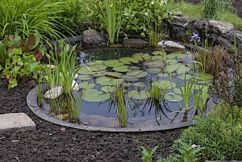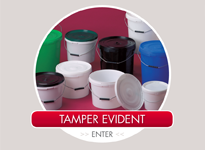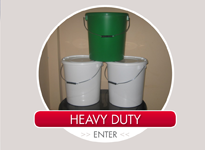

Use plastic buckets when making a pond
October 22, 2014 at 5:32 PM
We have just dug out a pond in our own back garden and can report that it has completely energised the natural organic flow of the space. Suddenly, there is something approaching an oasis in our garden for all manner of wildlife, coming down to benefit from this new habitat, this fresh source of water and food.
 There are something like two million ponds across the UK. If you’d like to make that two million and one, here are some things you should be thinking about:
There are something like two million ponds across the UK. If you’d like to make that two million and one, here are some things you should be thinking about:
Firstly, this is the perfect time of year to dig your pond. In autumn the ground is soft and you can allow it to naturally fill up with rainwater. Alternatively, you might use one of H&O’s 30 litre plastic buckets, both to help remove the soil to make the pond, and then to fill it with water. As this bucket comes with a metal handle, you will find it easy to transport both around the garden.
So, choose your location – preferably one that is at least partially shady. Once you have your hole dug out (ideally around 80cms at its deepest), and the soil removed, you will need to both flatten out the bottom of the pond, and shape its sides. Ideally, you might include a step at one end, in order for plants to rest, and a shallower “beach” at the other, in order for animals to easily reach the water.
Fill your bucket with any rocks
Then place two layers of pond liner in your pond. If you buy dedicated pond liner this is likely to come complete with an underlay, and then the liner itself. Ensure all rocks and pebbles are removed from the bottom of the pond to minimise the likelihood of the bottom tearing. Step the liner down to ensure it’s pushed into all sides of the pond, folding it over where necessary. Then infill your pond with water, using the bucket, ensuring that you mix any tap water with natural rainwater from a water butt.
The next step is to secure the liner with rocks and boulders around all sides, and then to cut away the excess liner to leave a handsome, tidy looking pool.
You can help the pond “bed in” by introducing some aquatic plants. Oxygenating plants are submerged in the water and provide life and sustenance to the pond and its wildlife. Look for curled pondweed, water milfoil, water-starwort and water lilies. Marginals are the plants that grow around the edges, part in and part out of the water. These plants, such as plantain and spearwort, essentially create natural organic perches, for insects that come visiting.
And then? Well then you simply stand back and let nature take its course. You can expect to see anything from newts and snails through the winter through to foxes, badgers and a variety of birds through the warmer months.
Your pond will quickly form one of the key parts of your garden, especially if you follow these steps, and consider making it friendly to wildlife. A pond can then form the lungs of your garden, in terms of the life it supports. From insects to frogs to birds, your garden is now complete… nothing short of a suburban microhabitat!
Add Pingback















